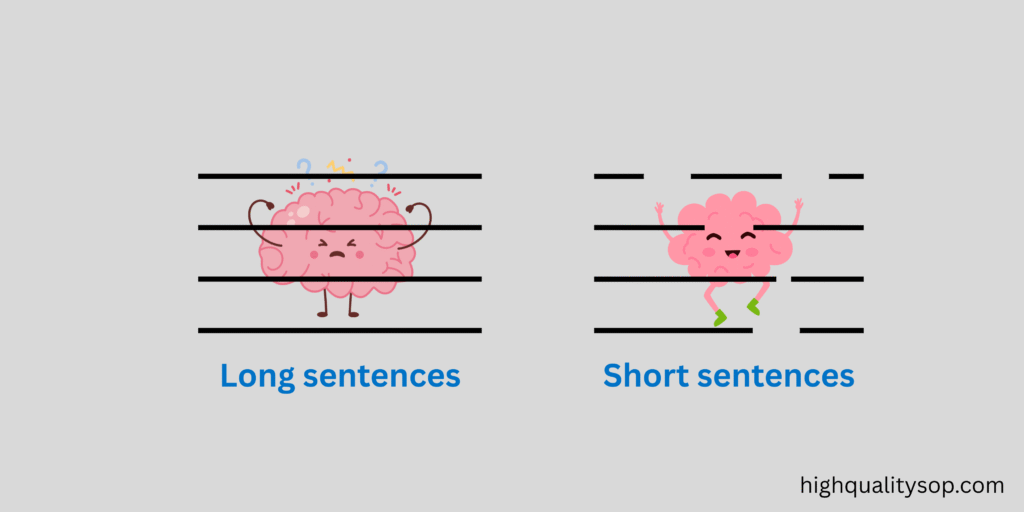The Power of Short Sentences

In 1956, cognitive scientist George A. Miller published a paper titled “The Magic Number Seven, Plus or Minus Two: Some Limits on Our Capacity for Processing Information.” Known as “Miller’s Law,” his research showed that the average person can hold approximately seven items in their working memory–plus or minus two. So there is a scientific basis for why long phone numbers are hard to remember.
While Miller’s research focused on numbers, it offers a valuable insight into sentence length. Long sentences can overload a reader’s working memory, leading to confusion, disengagement, and fatigue.
Short sentences, on the other hand, enhance comprehension by presenting ideas more clearly and succinctly. Readers can process shorter sentences without the cognitive burden of managing multiple concepts simultaneously.
Consider the examples below:
- Version A: Although there are many ways to improve the quality of your writing, the easiest of all is avoiding long sentences, which are often the result of the writer trying to squeeze too many ideas into a single sentence and forgetting that our short-term memory is limited and unsuitable for absorbing multiple ideas without any gaps in between, a habit that your readers will pay for by feeling tired and confused.
- Version B: Although there are many ways to improve the quality of your writing, the easiest of all is avoiding long sentences. Writers often squeeze too many ideas into a single sentence, ignoring the limitations of our short-term memory. If you write long sentences, your readers will pay for it by feeling tired and confused.
Don’t you find Version B is easier to read and understand?
Guidelines for sentence length
Writing short sentences is one of the simplest ways to improve your writing and SOPs. But how short is “short”? These three practical guidelines can help:
- One idea: Use one sentence to convey one action or idea only.
- Range: In general, aim for an average sentence length of about 18–20 words. This doesn’t mean writing every sentence to fall within this range. Some may exceed 20 words, while others may fall short, but overall, try to maintain an average length around 18–20 words.
- Break: If you encounter a long sentence, break it into smaller ones.
Just as phone numbers are broken up with dashes to ease recall, sentences should be broken up to ease understanding. Apply this principle to your SOPs—and you’ll dramatically improve their clarity.
The most valuable of all talents is that of never using two words when one will do.
THOMAS JEFFERSON
